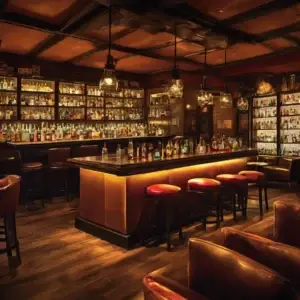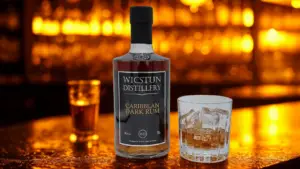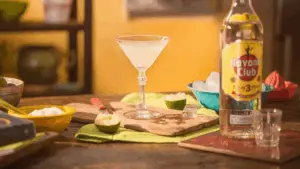For whisky lovers, there are few pilgrimages as rewarding as the road to Dufftown. Tucked away in the rolling hills of Speyside, this modest town of fewer than 2,000 residents has earned the title of Scotland’s “Whisky Capital.” To walk its streets is to step into two centuries of whisky-making history, with distilleries clustered so close together that their stills have shaped the very identity of the place.
The journey begins with Mortlach, established in 1823 as Dufftown’s first legal distillery. Known for its bold, meaty spirit produced through a unique 2.81 distillation process, Mortlach remains a favorite for those seeking depth and intensity in their glass. Just a short walk away stands Glenfiddich, founded in 1887 by William Grant. Built stone by stone with the help of his family, Glenfiddich grew from a dream into one of the world’s most recognized single malts, and today remains one of the few distilleries still independently owned.
Expansion and Craft as Whisky Capital
In 1892, Grant expanded his vision with The Balvenie, a distillery that continues to honor traditional methods rarely seen today. Balvenie still malts its own barley, maintains its own cooperage, and employs its own coppersmiths, preserving skills that have disappeared from most of the industry. A visit to Balvenie is more than a tasting; it is an education in whisky craftsmanship at its most authentic.
Dufftown’s whisky map grew further in the late 19th and 20th centuries. Convalmore, opened in 1894, supplied blends until its closure in the 1980s, though rare bottlings remain highly prized. Dufftown Distillery, one of the famous ones in Whisky Capital, established in 1895, became a cornerstone supplier for Bell’s blended whisky. Later, Pittyvaich, founded in 1975 and closed in 1993, left behind a brief but fascinating legacy, with rare expressions surfacing at auctions. Finally, Kininvie, opened in 1990, represents modern Dufftown innovation, producing malt for blending and occasionally releasing single malt.
Seven Stills and a Saying
Local lore claims: “Rome was built on seven hills, Dufftown stands on seven stills.” Though not all of the original seven remain active today, their presence gives the town its distinctive character. Within a short walk, visitors can experience distilleries with wildly different house styles: Glenfiddich’s bright, fruit-driven whiskies, Mortlach’s robust meaty profile, or Balvenie’s elegant richness. This concentration of distilleries makes Dufftown unique in Scotland, a living museum of whisky diversity.
Travelers who come for whisky often discover more in this Whisky Capital. Just beyond The Balvenie distillery rise the ruins of Balvenie Castle, a 13th-century stronghold that once guarded the valley. The town also plays a central role in the Malt Whisky Trail, the official route connecting Speyside’s most important distilleries and visitor centers. Each spring, the Spirit of Speyside Whisky Festival transforms Dufftown into a global gathering place, with tastings, masterclasses, and cultural events that attract visitors from across the world.
A Sense of Place: Whisky Capital
Walking through Dufftown is a reminder that whisky is not just a drink but an experience tied to landscape and community. The air is heavy with the scent of malted barley, and the town is surrounded by fertile fields and pure waters that explain why distillers chose this spot two centuries ago. In its pubs and tasting rooms, visitors encounter hospitality that reflects a community built around whisky, where pride in craft runs as deep as tradition.
The Heart of Whisky
For the Barlist community, Dufftown is not simply a destination but a journey into the very soul of Scotch whisky. It is a place where history, craft, and culture meet in every glass. Travelers leave with more than memories of fine drams—they leave with the sense of having touched the living heart of whisky-making, a legacy that has shaped not just Speyside but the entire identity of Scotch whisky worldwide.


